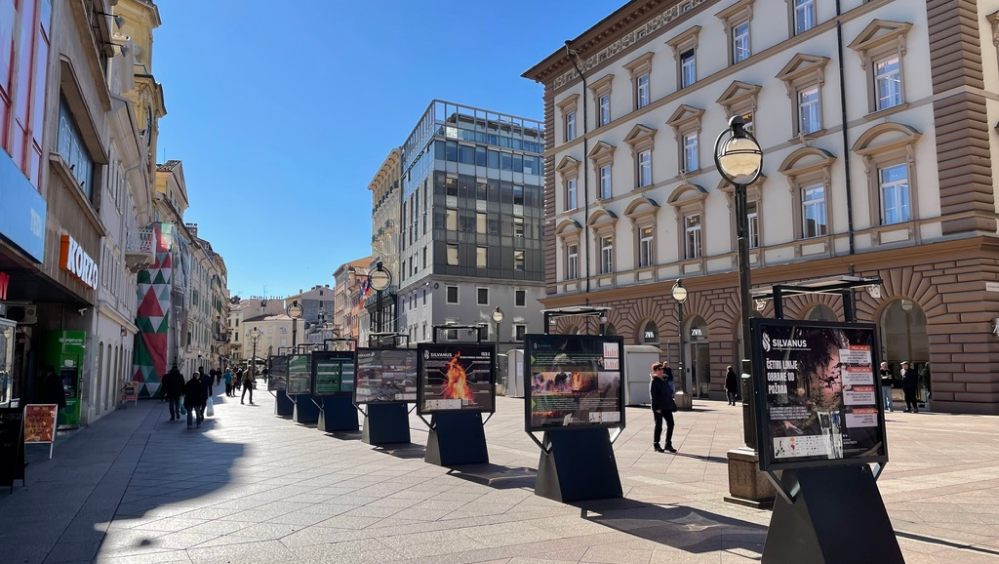Author: Sara Lladó
More infoThe summer of 2023 will be remembered for the devastating wildfires that ravaged several parts of the world, including Maui (Hawaii), Spain, Greece, and many others. These wildfires have not only posed immediate threats to human lives and property but have also highlighted the urgent need for global action to address their principal causes, consequences, and mitigation efforts. In this article, we will delve into the factors behind the summer wildfires of 2023, their far-reaching consequences, the global response to this crisis, and what citizens can do to contribute to wildfire prevention and mitigation.
The principal causes of the summer wildfires in 2023 are multifaceted. Climate change stands as the foremost contributor, with rising temperatures, prolonged droughts, and shifting weather patterns creating ideal conditions for wildfires to ignite and spread rapidly. Concurrently, irresponsible human activities, such as campfires left unattended, discarded cigarette butts, and even intentional arson, have played a significant role in sparking these devastating fires.
When talking about how we can prevent wildfires from happening, Lovorko Marić, a consultant specialising in the assessment of the social and economic impact of energy and environmental projects such as SILVANUS, a collaborative effort with experts from different continents aimed at counteracting forest fires and improving the resilience of forests to climate change, explains:

The [icon1] consequences of wildfires, such as loss of life and property, are tragic outcomes. Evacuations and firefighting efforts have been widespread, leaving communities to grapple with the devastating aftermath of these fires. Secondly, these wildfires have caused extensive environmental damage. This includes the destruction of habitats, soil erosion, and the release of significant amounts of carbon dioxide into the atmosphere, further exacerbating the issue of climate change. Marić further advises that the land can take “years, even decades” to recover; “it depends on the magnitude of the area affected, the resilience of the region, the vegetation, the soil, and all kinds of factors”, the expert states.
In addition, sustainable forest management practices, such as controlled burning and vegetation clearance, are being promoted to reduce fuel loads and mitigate wildfire risk.
This is where the role of SILVANUS takes action. Scientists and research engineers from 18 different countries will aid the civil protection authorities in efficiently monitoring forest resources, evaluating biodiversity, generating more accurate fire risk indicators, and promoting safety regulations among the local population affected by wildfires through awareness campaigns.
For that purpose, they have defined three phases of action: The first one is preparedness and prevention, the second is the detection and response, and the third one is restoration adaptations”.
On the individual level, citizens can play a crucial role in wildfire prevention and mitigation. Fire safety education is fundamental, and people should familiarise thmselves with safety measures, including creating defensible spaces around their properties, practising safe campfire use, and understanding evacuation procedures.
As Marić states: “There is never too much education”, he suggests this perspective could be linked to citizen engagement. Within the SILVANUS project, for instance, they are working on a citizen engagement program and campaign that aims to involve stakeholders and citizens to the greatest extent possible in a digital platform development and evolution process. A significant focus of this program is on education, particularly on teaching people how to behave when in proximity to a wildfire and what actions to avoid. Regarding the issue of arson, the expert acknowledged that it might be challenging to predict and prevent, but he believes that if people are educated and motivated to identify such problems to the best of their abilities, it could potentially lead to progress in addressing the issue.
Responsible behaviour is equally important, involving avoiding activities that could potentially trigger wildfires, such as carelessly discarding cigarette butts or leaving campfires unattended. Vigilance is key, and reporting suspicious behaviour and incidents of arson to authorities can help prevent wildfires. Moreover, citizens can advocate for climate action policies that address the root causes of wildfires by reducing greenhouse gas emissions, which is fundamental for long-term wildfire prevention. Lastly, community preparedness efforts are vital, and citizens can collaborate with neighbours and local authorities to establish comprehensive wildfire preparedness plans, including developing evacuation routes and communication systems to ensure the safety of their communities.
To achieve this goal, one of the SILVANUS project activities involves interactive exhibitions to disseminate as much of the critical messages locally, as well as an interactive educational campaign.

The summer wildfires of 2023 serve as a reminder of the urgent need to address climate change, improve forest management practices, and foster global collaboration in the face of growing wildfire risks. While governments and organisations play a vital role in mitigation efforts, every citizen has a responsibility to adopt fire-safe behaviours and support initiatives aimed at protecting our communities and the environment. Only through collective action can we hope to reduce the devastating impact of wildfires in the years to come.
The SILVANUS project is a collaborative effort with experts from different continents aimed at countering forest fires and enhancing forest resilience to climate change. It brings together experts in environmental, technical, and social sciences to support regional and national wildfire management authorities.
Sources
Collaborators

Lovorko Marić
Lovorko Marić is a consultant specializing in assessing the social and economic impacts of energy and environmental projects. He has extensive experience in th ...
Organization:
SILVANUS

Mónica Catalán
I am a journalist specialising in the dissemination of European projects. My aim is to bring specific communication to the general public
Organization:
Inmedia Solutions
Organizations
.png)
EU-funded Horizon 2020 project
SILVANUS